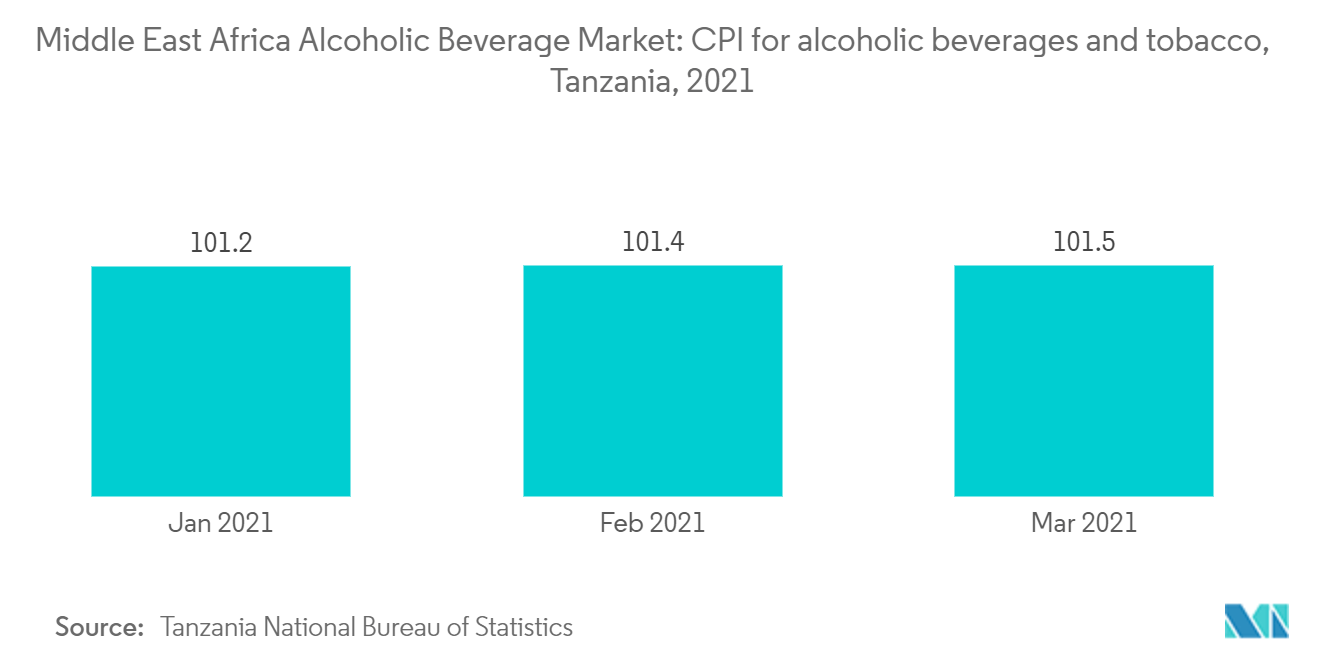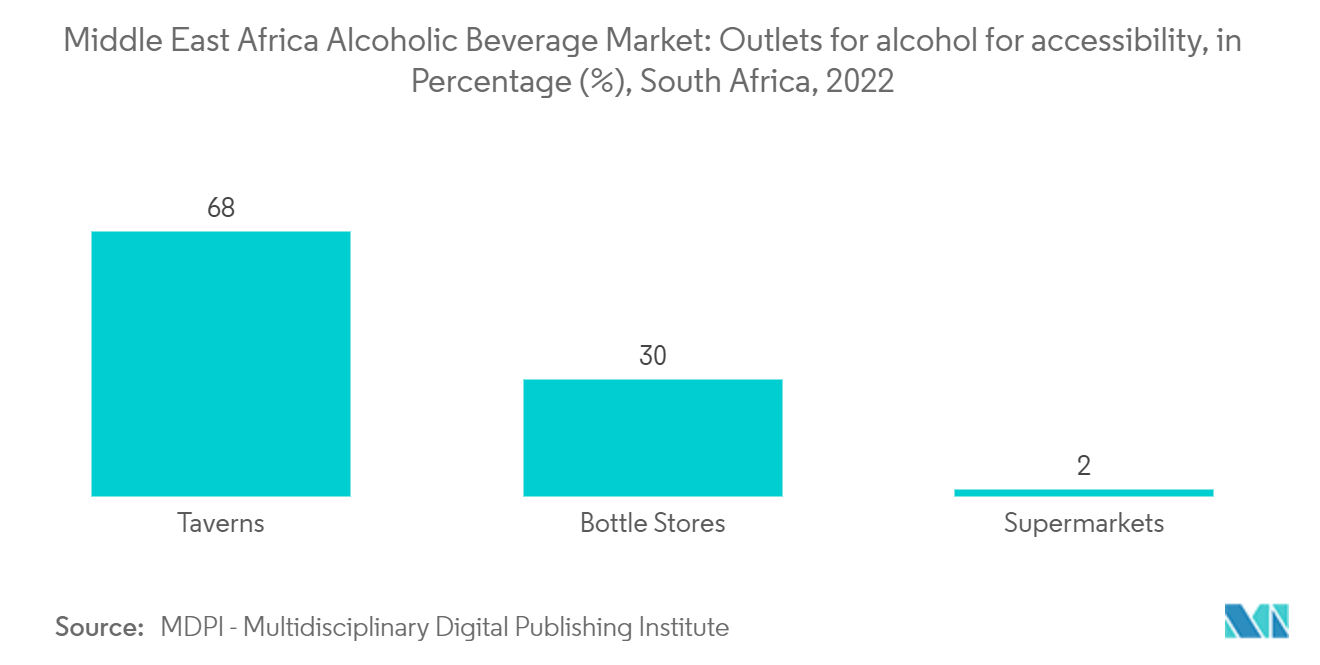Market Trends of Middle East & Africa Alcoholic Beverage Industry
Growing Preference for Low Alcohol by Volume (ABV)
- The Middle East and African market is witnessing an upsurge in the demand for low-alcohol-by-volume beverages, specifically among the millennial and the baby boomer generations. This can be attributed to the growing health consciousness among individuals and the availability of a broader product portfolio with improved taste, aiding consumers to select products as per their preference easily.
- Low-ABV drinks often contain fewer calories and less sugar than their higher-alcohol counterparts. This appeals to consumers from the Middle East and Africa region, who are conscious of their calorie intake and sugar consumption. Additionally, many consumers are now prioritizing responsible drinking, and low-ABV beverages enable them to enjoy alcoholic drinks in moderation, reducing the risk of excessive consumption and its associated health and social consequences.
- Besides this, manufacturers are capitalizing on the growing interest of consumers in low-alcoholic content wine, beer, and craft beers, thus introducing products that are in line with consumers’ interests. For instance, in August 2021, Leopard’s Leap Wines launched a low-alcohol wine named Chescato, a blend of Chenin Blanc and Moscato in the South African market. The alcohol content in the Chescato wine is 8.5% Vol, as per the company claims, while the typical alcohol content in wine is around 12.5–13.5%.

South Africa is the Largest Share Holder in the Regional Alcoholic Beverage Market
- South Africa is the largest shareholder in terms of the consumption of alcoholic beverages in the region. This is primarily due to the Western influence on eating and drinking habits and increasing socializing trends. According to the World Population Review Report in 2022, South African consumers of alcohol are some of the heaviest drinkers globally and consume 9.45 liters of alcohol per person in a year.
- The etiological and reasons-for-drinking literature has focused on two causes of alcohol consumption: people drink to relieve stress, and people drink as a result of social pressures. The main factors driving growth in the alcoholic beverage market over the medium term have been the increased availability of brands and products in the market, along with the ongoing strength of well-positioned brands.
- During the forecast period, the demand for premium drinks is anticipated to increase the market potential. In addition, many local players have started adding fruit hops to craft beer to take away its bitter flavor and give it a pleasant, juicy mouthfeel. Also, the demand for beer has increased due to a rise in the number of social drinkers. Low-alcohol beer has also become more popular, particularly among young customers aiming to lead healthy lifestyles and limit their alcohol consumption. Also, the expansion of e-commerce, the penetration of the internet, and the rise of social media have made it possible for manufacturers to develop more effective retailing channels and market presence. Therefore, all these factors are driving the alcoholic beverage market in this region.

